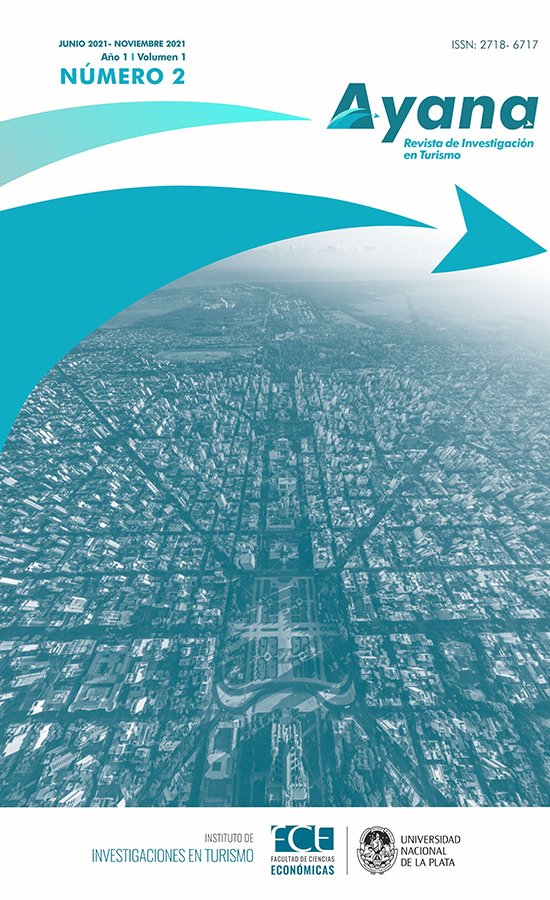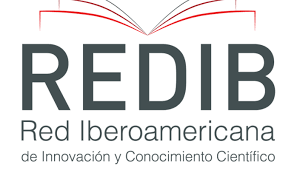Profile, motivation and satisfaction of the tourist visitor: The case of Cuenca, a world heritage city
DOI:
https://doi.org/10.24215/27186717e009Keywords:
tourism, psychology, motivation, satisfaction, segmentationAbstract
Tourism is a driving force for the economy of Cuenca, Spain. Nevertheless, depopulation is restraining its development. One possible measure to reactivate touristic activity involves the segmentation of visitors into defined groups in order to offer services and products according to visitors’ interests and needs. This research aims to know the visitors’ profile based on their sociodemographic data, their trip characteristics and, particularly, their motivations. In addition, this research examines the visitors’ satisfaction and its relationship to their trip motivations. To this end, two questionnaires were developed and distributed to visitors. The obtained data was analysed through the SPSS statistical software. Results encourage the use of motivation as a segmentation criterion along with the collection of visitors’ sociodemographic data and trip characteristics. This research also proves that tourist satisfaction is related to visitors’ motivations, except for the ‘general satisfiers’. In addition, it is found that tourism promotion needs to be orientated towards potential sources of visitors through the Internet, bearing in mind the importance of the image of the destination.
Downloads
References
Baloglu, S. y McCleary, K. W. (1999). A model of destination image formation. Annals of tourism research, 26(4), 868-897.
Burkart, A. J. y Medlik, S. (1981). Tourism: past, present and future. Heinemann.
Castaño, J. M., Moreno, A. y Crego, A. (2006). Factores psicosociales y formación de imágenes en el turismo urbano: un estudio de caso sobre Madrid. Pasos, 4(3), 287-299.
Castaño, J. M., Moreno, A., García, S. y Crego, A. (2003). Aproximación psicosocial a la motivación turística. Estudios turísticos, (158), 5-42.
Cervantes, M., González, A. y Muñiz, N. (1999). La incidencia de los estilos de vida en la segmentación del mercado turístico: aplicación a la población urbana de Castilla y León. Revista de Investigación Económica y Social de Castilla y León, (2), 41-56.
Crompton, J. L. (1979). Motivations for Pleasure Vacations. Annals of Tourism Research, 6(4), 408-424.
Crompton, J. L. y Ankomah, P. K. (1993). Choice set propositions in destination decisions. Annals of Tourism Research, 20(3), 461-476.
Dann, G. M. (1977). Anomie, ego-enhancement and tourism. Annals of tourism research, 4(4), 184-194
Devesa Fernández, M., Laguna García, M. y Palacios Picos, A. (2010). Motivación, satisfacción y lealtad en el turismo: el caso de un destino de interior. Revista Electrónica de Motivación y Emoción, 13(35 y 36), 169-190.
Devesa Fernández, M. y Palacios Picos, A. (2005). Predicciones en el nivel de satisfacción percibida por los turistas a partir de variables motivacionales y de valoración de la visita. ICE, Revista de Economía, (821), 241-256.
Echtner, C. M. y Ritchie, J. B. (1991). The meaning and measurement of destination image. Journal of tourism studies, 2(2), 2-12.
Ekinci, Y. y Hosany, S. (2006). Destination Personality: An Application of Brand Personality to Tourism Destinations. Journal of Travel Research, 45(2), 127–139.
Erevelles, S. y Leavitt, C. (1992). A comparison of current models of consumer satisfaction/ dissatisfaction. Journal of consumer satisfaction, dissatisfaction and complaining behavior, 5(10), 104-114.
Esteban, A., Mondéjar, J. A. y Cordente, M. (2009). Segmentación de turistas en una ciudad patrimonio de la humanidad. Turismo cultural en ciudades patrimonio de la humanidad. Ediciones de la Universidad de Castilla-La Mancha.
Fakeye, P. C. y Crompton, J. L. (1991). Image differences between prospective, firsttime, and repeat visitors to the Lower Rio Grande Valley. Journal of travel research, 30(2), 10-16.
Festinger, L. (1957). A theory of cognitive dissonance. Stanford University Press.
Folgado, J., Oliveira, P. y Hernández, J. (2011). Imagen del destino y marca turística: Sinergias e implicaciones. Tourism & Management Studies, 1, 904-914.
Gartner, W. C. (1994). Image formation process. Journal of travel & tourism marketing, 2(2-3), 191-216.
Gunn, C. (1972). Vacationscape: Designing tourist regions. Bureau of Business Research, University of Texas.
Hu, Y. y Ritchie, J. B. (1993). Measuring destination attractiveness: A contextual approach. Journal of travel research, 32(2), 25-34.
Hunt, J. D. (1975). Image as a factor in tourism development. Journal of travel research, 13(3), 1-7.
Instituto Nacional de Estadística. (2018). Aportación del turismo a la economía española 2017.
Instituto Nacional de Estadística. (2019a). Encuesta de Gasto Turístico (EGATUR) 2018.
Instituto Nacional de Estadística. (2019b). Encuesta de Turismo de Residentes (ETR/FAMILITUR) 2018.
Instituto Nacional de Estadística. (2019c). Cifras oficiales de población resultantes de la revisión del Padrón municipal a 1 de enero 2018.
Iso-Ahola, S. E. (1982). Toward a social psychological theory of tourism motivation: A rejoinder. Annals of tourism research, 9(2), 256-262.
Joppe, M., Martin, D. W. y Waalen, J. (2001). Toronto’s Image as a Destination: A Comparative Importance-Satisfaction Analysis by Origin of Visitor. Journal of Travel Research, 39(3), 252–260.
Millet, O. F. (2010). La imagen de un destino turístico como herramienta de marketing. Universidad de Málaga (UMA), Grupo EUMEDNET. http://dialnet.unirioja.es/servlet/fichero_libro?codigo=482050&orden=0
Milman, A. y Pizam, A. (1995). The role of awareness and familiarity with a destination: The central Florida case. Journal of travel research, 33(3), 21-27.
Mondéjar, J. y Vargas, M. (2009). Construcción de un modelo para el análisis de motivaciones sobre la elección de un destino turístico. Estudios y perspectivas en turismo, 18(4), 400-414.
Oppermann, M. (2000). Tourism destination loyalty. Journal of travel research, 39(1), 78-84.
Pearce, P. L. y Lee, U.-I. (2005). Developing the Travel Career Approach to Tourist Motivation. Journal of Travel Research, 43(3), 226–237.
Recio, M. y Martínez, J. (2002). Alternativas de segmentación en mercados turísticos: Una Aplicación al Caso del Turista Rural [Ponencia]. IV Congreso de Turismo, Universidad y Empresa, Castellón.
Sancho, A. y Buhalis, D. (1998). Introducción al turismo. Organización Mundial del Turismo.
Smith, W. R. (1956). Product differentiation and market segmentation as alternative marketing strategies. Journal of marketing, 21(1), 3-8.
Tse, D. K. y Wilton, P. C. (1988). Models of consumer satisfaction formation: An extension. Journal of marketing research, 25(2), 204-212.
United Nations Educational, Scientific and Cultural Organization. (1996). Historic Walled Town of Cuenca. https://whc.unesco.org/en/list/781
Westbrook, R. A. y Reilly, M. D. (1983). Value-percept disparity: an alternative to the disconfirmation of expectations theory of consumer satisfaction. Advances in Consumer Research, 10, 256-261.
Downloads
Published
How to Cite
Issue
Section
License
Those authors who have publications with this journal, agree with the following terms:
a. Authors will retain its copyright and will ensure the rights of first publication of its work to the journal, which will be at the same time subject to the Creative Commons Atribución-NoComercial-SinDerivadas 4.0 Internacional (CC BY-NC-ND 4.0) allowing third parties to share the work as long as the author and the first publication on this journal is indicated.
b. Authors may elect other non-exclusive license agreements of the distribution of the published work (for example: locate it on an institutional telematics file or publish it on an monographic volume) as long as the first publication on this journal is indicated,
c. Authors are allowed and suggested to disseminate its work through the internet (for example: in institutional telematics files or in their website) before and during the submission process, which could produce interesting exchanges and increase the references of the published work. (see The effect of open Access)

























